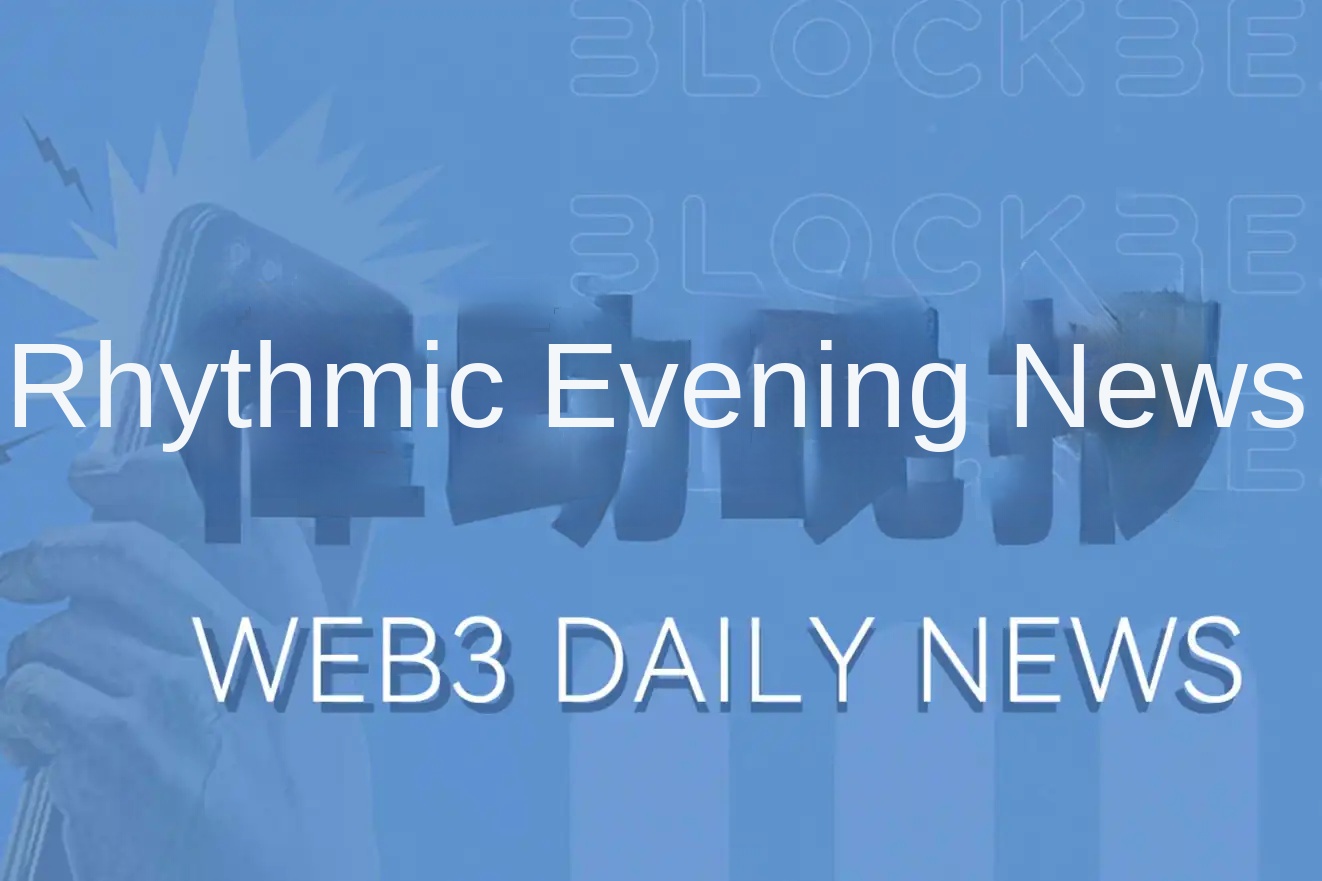Three key performance indicators to see if Arbitrum can become a Layer2 season dark horse
原文标题:Arbitrum is Mooning
原文 来源:Ben Giove,Bankless 分析师
MarsBit
This is the L2 season.
Layer 2 is currently one of the strongest growth areas in crypto, with its ETH denominated TVL, user volume and transaction volume soaring during 2022.

Overall, L2 is now consistently handling more transactions than Ethereum L1 and is starting to really prove their capabilities as the primary expansion solution for Ethereum.
One of the main forces driving L2 growth is Arbitrum, an optimistic rollup. In an increasingly competitive rollup environment, Arbitrum is emerging as DeFi's primary L2, with a large number of innovative applications and a strong community.
Arbitrum key performance indicators
DeFi TVL

Source: DeFi Llama
Arbitrum's TVL is $1.1 billion, ranking fifth among all L1 or L2, with a 2.5% TVL share among all networks and an additional 62% TVL share in L2.
Arbitrum's market share has grown substantially in the past year, and this growth is likely due to the growth of applications such as GMX, a perpetual contract trading platform (more on that later).
It should be noted that Arbitrum's growth did not use the net wide incentive plan, as rollup did not have native tokens. However, a certain percentage of liquidity on the network may only be used for retroactive airdrops (more on that later).
Active address

Arbitrum Monthly active address: Source Dune Analytics
Arbitrum fourth quarter average monthly active address (MAA) was 614,279, sequential (Q/Q) and year-on-year (Y/Y) growth of 81.3% and 728.7%, respectively. L2 is expected to exceed this number in January 2023, as the current number of active addresses for that month is projected to be 631,633.
The user surge was combined with growth in liquidity within the Arbitrum ecosystem and growth following Nitro's much-anticipated network upgrade in August 2022, which increased transaction throughput and speed. However, due to lower Gas costs, part of Nitro's growth may be the result of potential Arbitrum token airdrops involving robots.
transaction

Arbitrum Monthly Deal - Source: Dune Analytics
Arbitrum's number of transactions grew along with the number of users, up 199.6% (Q/Q) and 1,904.2% (Y/Y) in the fourth quarter, respectively.
As with active addresses, the deployment of Nitro in August 2022 saw a significant increase in trading volumes, attributed in part to airdrop mining. Since October 2022, Arbitrum has processed 52.7 percent of the number of transactions verified on Ethereum L1 over the same period.
Noteworthy Arbitrum project
Now that we've talked about Arbitrum's KPIs, let's take a look at some of the major DApps that have contributed to Arbitrum's success.
Arbitrum is fast becoming a DeFi hotbed, leveraging rollup's enhanced scalability to unlock new types of applications while taking full advantage of the composability offered by Common L2 to create a broad and interwoven ecosystem. In addition, many of these agreements are grassroots, with enthusiastic communities and limited VC influence.
Here's a look at some of the influential agreements:
GMX

At the top of the list is GMX, the decentralised perpetual contract exchange that has become Arbitrum DeFi's nexus.
GMX enables traders to take leveraged long or short positions of up to 50 times by borrowing from a basket of assets called GLPS. The GLP acts as a counterparty to the GMX because it accumulates value when the trader loses and loses value when the trader gains. GLP also receives 70% of all transaction fees paid in ETH, while stakeholders in the protocol governance token GMX earn another 30%.
GMX TVL amounted to $440.7 million, or 37.6 percent of all Arbitrum DeFi agreement TVLS. The agreement has become a cash cow, generating $33.9 million in revenue over the past year, making GMX tokens one of the best performing assets in a turbulent 2022, with returns of 84.0 percent against the dollar and 428.5 percent against ETH.
Due to the success of GMX, it is increasingly used as a base primitive and liquidity source by the Arbitrum-based DeFi protocol. Many protocols, such as Rage Trade, Jones DAO, GMD, and Umami Finance, build minimal incremental vaults on GLPS, while decentralized Options protocol Dopex is consolidating its Atlantic Options to provide clearing protection for traders. Other protocols, such as STFX, a social trading platform, and Lyra, another options protocol, have also been built on top of DEX. GLPS have also emerged as a form of collateral, with lending agreements such as Vesta and tenant.fi incorporating LP tokens into their products.
More perpetual contract products

GMX is not the only permanent game in the ecosystem. It was followed by notable Gains Network of challengers and newcomers. Gains originally came from Polygon, which used a similar model to GMX in that it used DAI vaults as a source of liquidity for counterparties and DEX trades.
Unlike GMX, however, Gains offers trading in cryptocurrencies, stocks and currencies, while providing the latter with up to 1,000x of leverage. Usage of the protocol has soared since its launch on December 30, with $1.2bn worth of transactions in that period.
Another well-known DEX is Cap Finance. Cap generated $21.7 billion in transactions over the past year and recently launched V3.1 and is preparing to launch V4. Other deals set to enter the perpetual contract space include Vertex, which has launched an order book trading platform, and Vela, which uses a unique model to leverage 1,000 times.
Other products
Perpetual contracts are not the only popular type of derivative in the Arbitrum ecosystem. There are a number of option agreements built on L2. Let's talk about some of them.
The most well-known option ecosystem on Arbitrum today is Dopex. Dopex offers a suite of options products, including options vault through SSOV, interest rate options Vault, and numerous products using the Atlantic options described above as straddled products, as well as GMX clearing protection as described above. Dopex itself has become a primitive form, with Jones DAO building option vaults that run automated policies on top of the protocol. The meta-governance aggregator Plutus is also built on Dopex by accumulating 54.6% of the supply of veDPX, which is a vote-lock variant of the Dopex governance token DPX.
Premia is another important option agreement that is getting a lot of attention. Premia is unique in that it is one of the only option agreements that offers American options, which are options that can be exercised before expiration. The agreement, which recently published its V3 white paper, will overhaul the AMM by consolidating some mortgages and centralizing liquidity while allowing the creation of unlicensed pools.
Of course, Premia and Dopex are not the only options, there are several other protocols such as Nuemon, which offers permanent options, and IVX, which is building option AMMs. Buffer Finance is another fast-growing protocol that gives users the ability to trade binary options, allowing traders to bet on the price direction of different assets for a short period of time.
The above items are Arbitrum native. However, these agreements will soon be challenged by migration projects such as Optimism Lyra, which, as mentioned above, plans to deploy its AMM on top of GMX.
NFT-Fi
The DeFi application is not the only use case for finding PMFS in Arbitrum. Arbitrum has a rapidly growing GameFi ecosystem that is powered by Treasure DAO.

Treasure is building a "decentralized Nintendo," a series of on-chain games that connect to each other through the interoperability of in-game assets and Treasure's native token MAGIC as a shared currency. Some of The most popular of these games include role-playing games such as strategy games Bridgeworld, The Beacon and Smolverse, as well as resource management and strategy game Realm.
These games can be accessed via Trove. Trove is the center of the treasure ecosystem, a marketplace for in-game assets and treasure NFT collectibles. The most popular of these series are Smol Brains (the basis of the Smolverse) and another NFT series, The Lost Donkeys, which has its own game of the same name.
Future outlook and growth catalyst
Although some of the liquidity and usage may be driven by airdrops, Arbitrum is expanding its user base and number of transactions while increasing its share of TVL in DeFi.
In addition, given Treasure's success and the growth potential of Arbitrum Nova, L2 built for gaming through AnyTrust, Arbitrum is well positioned in the gaming space to compete with other networks, Examples of Optimism and OPCraft are OP stacks built on custom L2.
Arbitrum should benefit from network effects through its extensive DeFi ecosystem, which may help it maintain or even expand its lead in TVLS in L2. And the lead can only be strengthened through incentive programs after the launch of the Arbitrum token.
Arbitrum tokens are the elephant in the room, almost some Offchain Labs will eventually release a token, To help maintain a level playing field with other tokenized L2 (e.g., Optimism, StarkWare) and eventually zkEVM (e.g., those from Polygon, zkSync).
Although it has grown significantly without anyone, the launch of the token is critical to Arbitrum's long-term success, as properly directed incentive programs have the potential to bring billions of liquidity into the network while expanding its user base and attracting developers and community idea sharing. Token allocations will also play an important role in determining L2's governance and long-term concentration of power within the ecosystem.
In addition, tokens can be used to decentralize key network functions, such as collators -- entities that sort, batch, and submit transactions to L1.
Arbitrum currently has a centralized sorter and whitelist proof verification, while having scalable contracts. Although these "guardrails" are sufficient to protect users, these centralised vectors are the biggest risks facing Arbitrum today because they increase the risk of censorship and loss of user funds.
According to an Arbitrum spokesperson, both the decentralized sorter and performless proof verification are in the works. However, significant safety or review incidents occurring during this period could seriously harm Rollup's long-term growth prospects.
All in all, Arbitrum seems poised to build on its strong app base and continue its growth momentum through 2023, even as network centralization risks remain.
Original link
Welcome to join the official BlockBeats community:
Telegram Subscription Group: https://t.me/theblockbeats
Telegram Discussion Group: https://t.me/BlockBeats_App
Official Twitter Account: https://twitter.com/BlockBeatsAsia
 Forum
Forum OPRR
OPRR Finance
Finance
 Specials
Specials
 On-chain Eco
On-chain Eco
 Entry
Entry
 Podcasts
Podcasts
 Data
Data


 Summarized by AI
Summarized by AI







